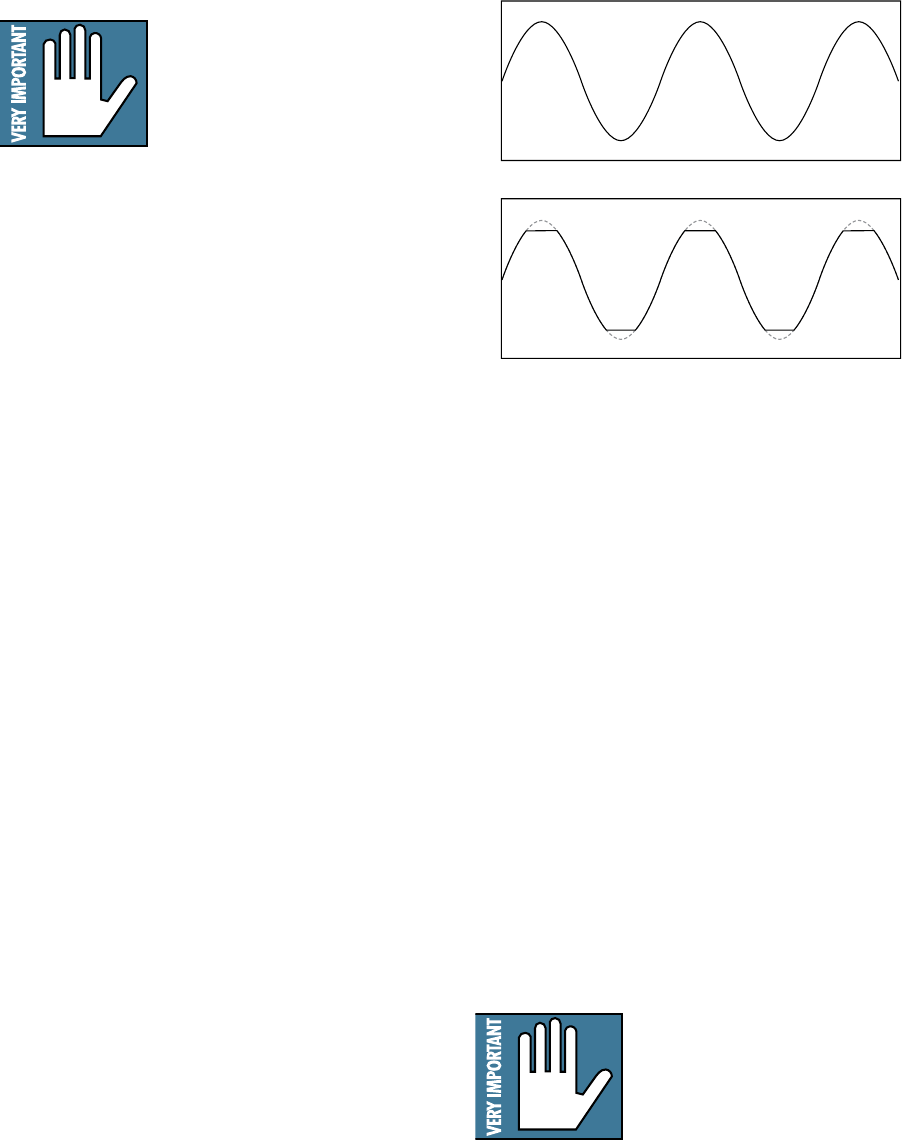
7
PROTECTION
A protection circuit is built into the C300z to
protect the high-frequency compression driver
from excessive power. When the power to the HF
driver approaches the maximum, the power de-
livered to the driver is momentarily reduced.
CAUTION: The protection
circuit is designed to protect
the HF driver under reasonable
and sensible conditions. Should
you choose to ignore the warn-
ing signs (i.e., frequent clip
LED indications, excessive distortion), you can
still damage the speakers in the C300z by over
-
driving them past their recommended amplifier
power-handling ratings, or past the point of am-
plifier clipping. Such damage is beyond the scope
of the warranty.
Amplifier Power
We give you three power-handling numbers for
the C300z: rms (continuous), music, and peak. So
how much power do you really need to drive the
C300z?
The answer to that question depends on what
type of program material you are running through
the system and how loud it needs to be.
Some audio signals have lots of momentary
peaks whose amplitudes extend far above the
average overall level of the program. Percussion in-
struments are a good example of this. Other types
of signals, like highly compressed rock music, have
a higher average signal level with fewer peaks.
Speech reinforcement requires less power overall,
but involves large moment-to-moment variations
in level.
Assuming you want to use the full capability
of the loudspeaker, and the program contains at
least some momentary peaks, we recommend that
you use an amplifier that is rated at twice the con-
tinuous power rating of the loudspeaker (into 8
ohms).
For the C300z, this would be 300 watts x 2
= 600 watts per channel into 8 ohms. This insures
that the amplifier can reproduce peaks that are 6 dB
higher than the continuous (rms) power-handling
rating before clipping occurs.
Preventing Loudspeaker Damage
Speaking of clipping, this is likely the number
one cause of damage to loudspeakers. Clipping oc-
curs when the signal at the output of any device
in the system (not just the amplifier) reaches its
maximum level. The input signal to the device
may continue to increase, but the output simply
stops, and is characterized by a “flat-top” ap-
pearance to the waveform when viewed on an
oscilloscope.
Normal Sine Wave Signal
☺
Clipped Sine Wave Signal
Clipping interrupts the motion of the trans-
ducer, creating distortion and excessive heat in the
driver, which can damage it over time.
Some folks think that if they use a power am-
plifier whose power rating is below the maximum
power-handling rating of the loudspeaker, then
they can’t possibly damage the loudspeaker. But if
the amplifier is driven into clipping, even a lower
power amplifier can damage the loudspeaker.
The bottom line is that to prevent damage to
the loudspeakers, you must have a properly oper-
ating sound system. Proper operation of a sound
system includes being aware of the types of audio
signals being reproduced, controlling the output
levels accordingly, and operating all the devices in
the system so that no clipping occurs within the
signal chain.
RIGGING
The C300z cabinets are fitted with ten rigging
points as shown in the diagram on the previous
page. These are M10 inserts. M10 threaded eye-
bolts (M10 x 1.5 mm x 20 mm) are available to fit
in these inserts (PA-A1 Eyebolts).
WARNING: Never attempt to
suspend the C300z loudspeak
-
ers by their handles. If you
want to suspend them, use the
rigging points only. Consult a
professional rigger or structural
engineer prior to suspending loudspeakers from a
structure not intended for that use. Always know
the working load limit of the structure supporting
the loudspeaker array. Always make sure that the
rigging hardware minimum rating is at least five
times the actual load.














